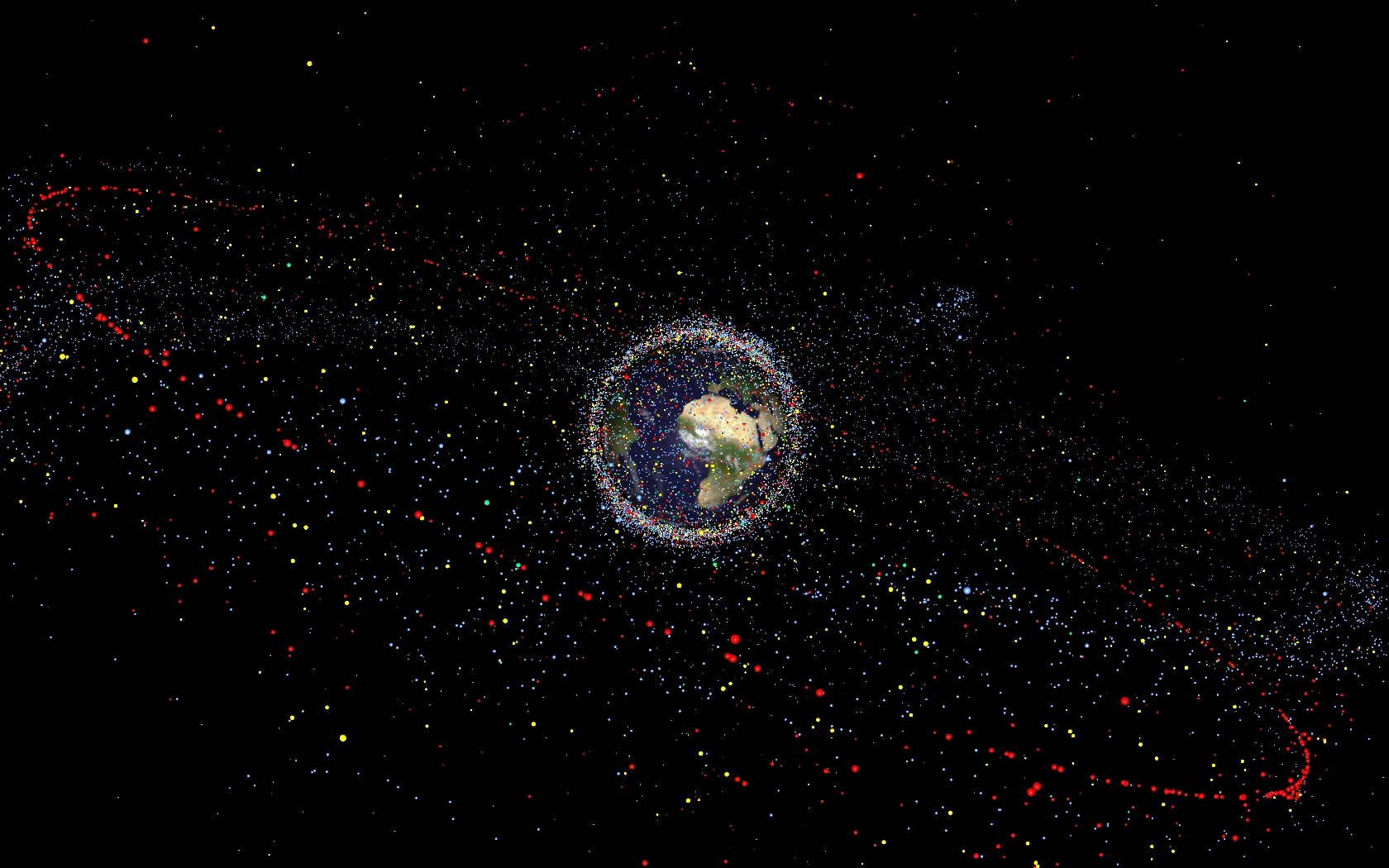A month ago, Aurélie Luneau (of radio France Culture) in the environment programme, ‘De cause à effets, le magazine de l’environnement’, invited Christophe Bonnal, from France’s CNES space agency, Luisa Innocenti, from ESA, and Gérard Brachet, a former CNES director, to discuss a new challenge: the increasing amount of space debris in orbit.

- Distribution of debris in space Copyrights: ESA
‘De cause à effets, le magazine de l’environnement’ is broadcast every Sunday at 16:00 and provides a stage for lively debates on environmental issues.
Christophe Bonnal is a space debris expert at CNES who published in 2016 the book ‘Pollution spatiale: l’état d’urgence’. Luisa Innocenti is head of ESA’s CleanSpace Office and Gérard Brachet is a former CNES director and a distinguished spaceflight engineer.
The three participants are experts on space debris and came on a Sunday afternoon to share their knowledge with the audience.
The programme opened with Gravity, the famous movie in which Sandra Bullock and George Clooney try to survive in space after a debris catastrophe leaves them stranded. Could this scenario happen in real life?
The guests also explain the origin of space debris, the risk for Earth inhabitants and the solutions they are looking at to clean up the mess (audio programme in French).
On Tuesday, 10 January 2017, at 16:00, Luisa Innocenti will again join journalists at France Culture to present solutions proposed by ESA’s Clean Space Office to reduce the growth of space junk. This time she will join the programme ‘La methode scientifique’, which daily covers scientific topics in partnership with France’s National Centre for Scientific Research (CNRS) and Science & Vie magazine.
Read more about space debris removal with Robin Biesbroek’s book: Active Debris Removal in Space





Discussion: no comments